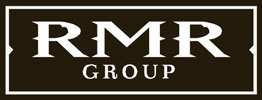Signs of strengthening conditions in the housing industry emerged in the final months of 2010. November’s new-home construction and sales data released by the U.S. Census Bureau—while a mixed bag of declines and increases—were mostly positive, reflecting on-going economic volatility within the broader recovery along with housing’s slow return to health. Existing-home sales and pending home sales also increased, according to the National Association of Realtors (NAR).
Overall residential construction permits and completions declined in November by 4 percent and 14.1 percent, respectively, while overall housing starts increased by 3.9 percent to a seasonally adjusted annual rate of 444,000. Single-family permits rose by 3.0 percent, and starts of single-family residences jumped by 6.9 percent to a rate of 465,000. Completions of single-family homes dropped by 10 percent, however, to a rate of 436,000.
New single-family home sales rose 5.5 percent in November to a rate of 290,000, but this is still 21.2 percent below the same period last year.
Multifamily construction remains depressed across the board, registering a 24.2 percent drop in permits for units in buildings of five or more units since October; this is 11.3 percent lower than in November 2009. Starts of multifamily units declined 18.2 percent in November, while completions plunged 30.5 percent since October—more than 73 percent lower than the same period last year.
However, according to the American Institute of Architects’ most recent Architecture Billings Index (ABI), the multifamily design sector led the way in November in terms of improving health, scoring an ABI of 54.3. Any score above 50 indicates an increase in billings by architecture firms.
When compared with November 2009, this November’s new and existing residential activity lagged significantly. But late 2009’s high levels were a result of the new home buyer tax credit, which had builders and customers bent on securing contracts and completing projects in time for the original Nov. 30 deadline.
Due in part to improved home affordability, existing-home sales rose 5.6 percent in November, according to the NAR, and Pending Home Sales increased 3.5 percent. Although there is still a 9 1/2-month supply of existing homes on the market, NAR’s chief economist, Lawrence Yun, predicts the excess inventory will be worked off gradually as unemployment declines, mortgage rates remain favorable, and lenders return to more normal lending standards. Yun expects the market will trend up to healthy, sustainable levels during 2011.
